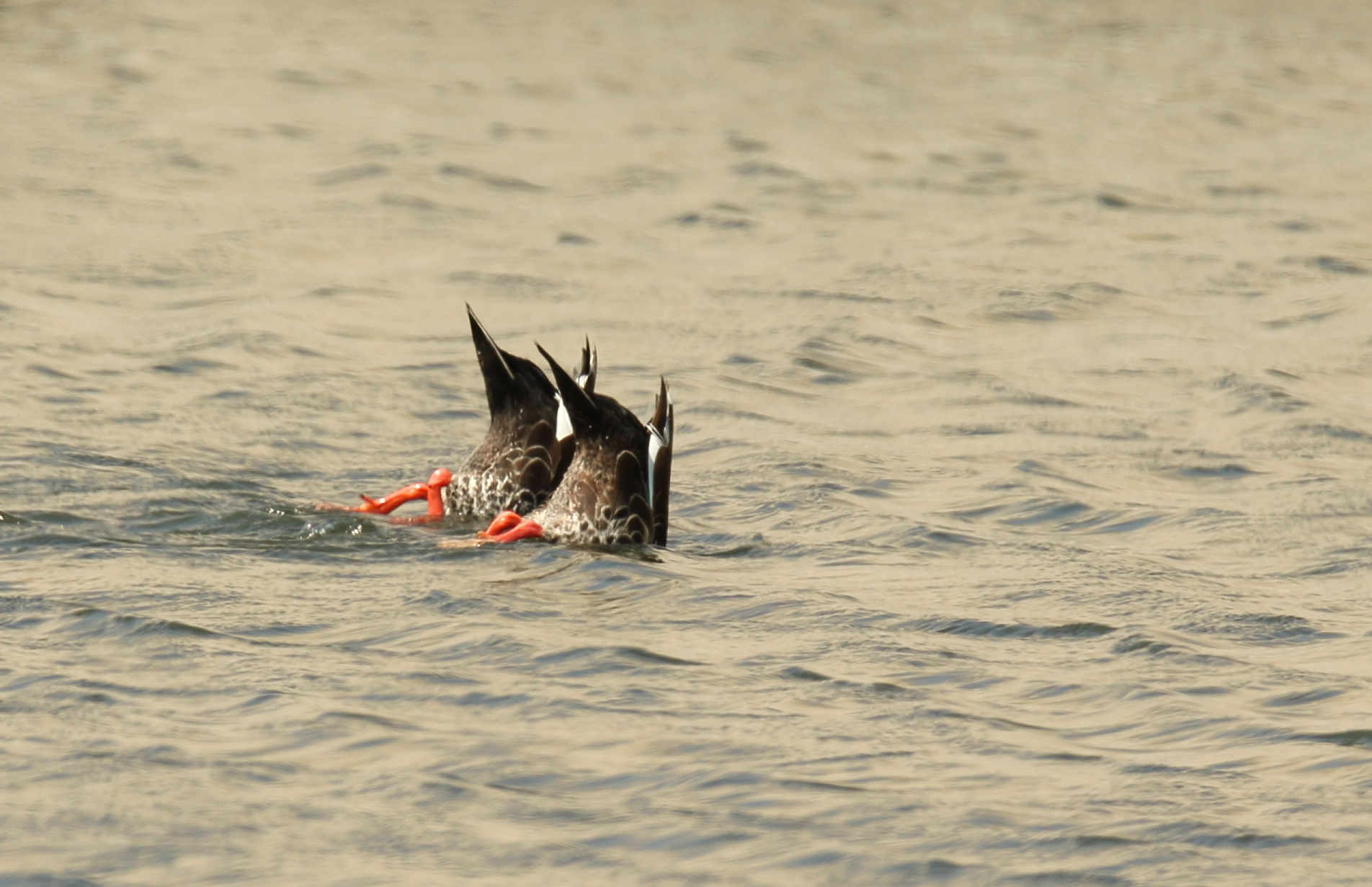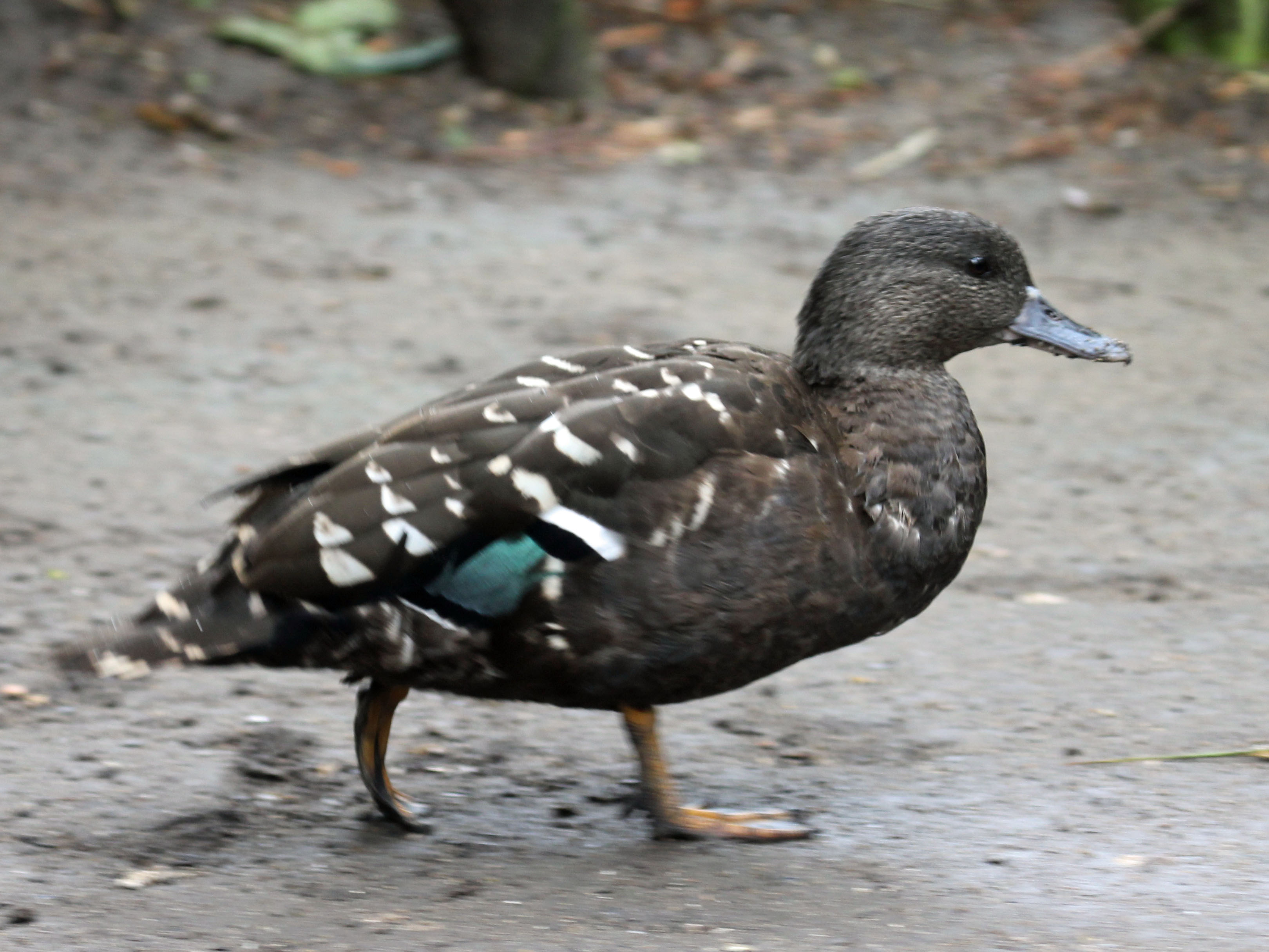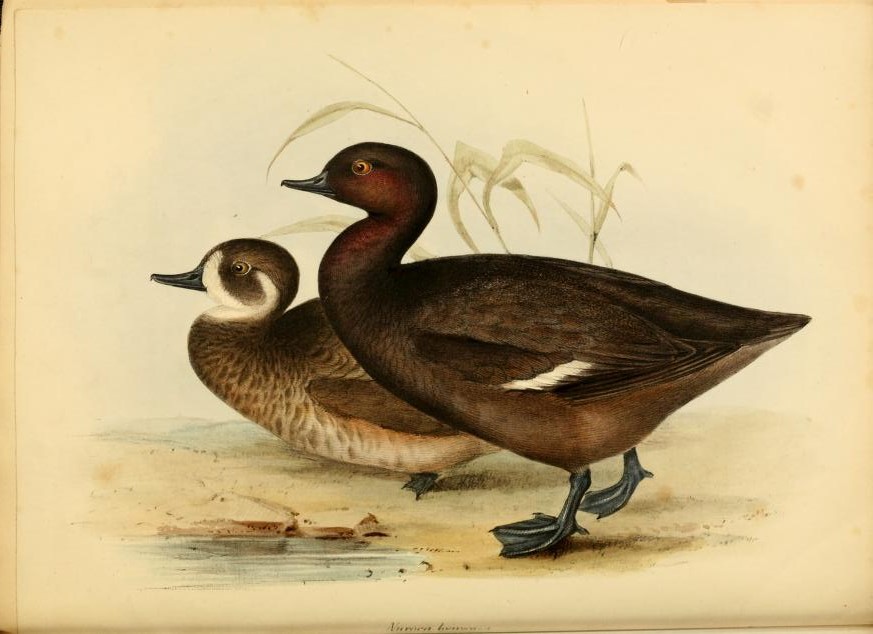|
Rosy-billed Pochard
The rosy-billed pochard (''Netta peposaca''), alternatively named rosybill or rosybill pochard, is a member of family Anatidae. Though classified as a diving duck, this pochard feeds more like a dabbling duck feeding on seeds roots, sedges, aquatic plants and other grasses. ''Netta'' is Ancient Greek for "duck" and ''peposaca'' is a transcription of the Guaraní name of this species which means "showy wings", referring to the broad white stripe that is only visible with stretched out wings. Male characteristic features include a bright red bill with a rounded knob at the base. The rosy-billed pochard is endemic to South America. It is found in Argentina, central Chile, Paraguay, Uruguay and southern Brazil. The population in southern Argentina migrates northward during the austral winter, reaching Brazil and southern Bolivia. It is a vagrant to the Falkland Islands. Taxonomy The rosy-billed pochard is one of five pochard species that make up the genus ''Netta,'' which is one of ... [...More Info...] [...Related Items...] OR: [Wikipedia] [Google] [Baidu] |
Louis Pierre Vieillot
Louis Pierre Vieillot (10 May 1748, Yvetot – 24 August 1830, Sotteville-lès-Rouen) was a French ornithologist. Vieillot is the author of the first scientific descriptions and Linnaean names of a number of birds, including species he collected himself in the West Indies and North America and South American species discovered but not formally named by Félix de Azara and his translator Sonnini de Manoncourt. He was among the first ornithologists to study changes in plumage and one of the first to study live birds. At least 77 of the genera erected by Vieillot are still in use. Biography Vieillot was born in Yvetot. He represented his family's business interests in Saint-Domingue (Haiti) on Hispaniola, but fled to the United States during the Haitian rebellions that followed the French Revolution. On Buffon's advice, he collected material for the , the first two volumes of which were published in France beginning in 1807. Vieillot returned to France for the last time in 1798, whe ... [...More Info...] [...Related Items...] OR: [Wikipedia] [Google] [Baidu] |
Anatinae
The Anatinae are a subfamily of the family Anatidae (swans, geese and ducks). Its surviving members are the dabbling ducks, which feed mainly at the surface rather than by diving. The other members of the Anatinae are the extinct moa-nalo, a young but highly apomorphic lineage derived from the dabbling ducks. There has been much debate about the systematical status and which ducks belong to the Anatinae. Some taxonomic authorities only include the dabbling ducks and their close relatives, the extinct moa-nalos. Alternatively, the Anatinae are considered to include most " ducks", and the dabbling ducks form a tribe Anatini within these. The classification as presented here more appropriately reflects the remaining uncertainty about the interrelationships of the major lineages of Anatidae (waterfowl). Systematics The dabbling duck group, of worldwide distribution, was delimited in a 1986 study to include eight genera and some 50–60 living species. However, Salvadori's te ... [...More Info...] [...Related Items...] OR: [Wikipedia] [Google] [Baidu] |
Thermoregulation
Thermoregulation is the ability of an organism to keep its body temperature within certain boundaries, even when the surrounding temperature is very different. A thermoconforming organism, by contrast, simply adopts the surrounding temperature as its own body temperature, thus avoiding the need for internal thermoregulation. The internal thermoregulation process is one aspect of homeostasis: a state of dynamic stability in an organism's internal conditions, maintained far from thermal equilibrium with its environment (the study of such processes in zoology has been called physiological ecology). If the body is unable to maintain a normal human body temperature, normal temperature and it increases significantly above normal, a condition known as hyperthermia occurs. Humans may also experience lethal hyperthermia when the wet bulb temperature is sustained above for six hours. Work in 2022 established by experiment that a wet-bulb temperature exceeding 30.55°C caused uncompensab ... [...More Info...] [...Related Items...] OR: [Wikipedia] [Google] [Baidu] |
Echinochloa
''Echinochloa'' is a very widespread genus of plants in the grass family and tribe Paniceae. Some of the species are known by the common names barnyard grass or cockspur grass. Some of the species within this genus are millets that are grown as cereal or fodder crops. The most notable of these are Japanese millet (''E. esculenta'') in East Asia, Indian barnyard millet (''E. frumentacea'') in South Asia, and burgu millet (''E. stagnina'') in West Africa. Collectively, the members of this genus are called barnyard grasses (though this may also refer to '' E. crus-galli'' specifically), and are also known as barnyard millets or billion-dollar grasses. When not grown on purpose, these grasses may become a nuisance to farmers. In particular, common barnyard grass (''E. crus-galli'') is notorious as a weed. It is not easily suppressed with living mulches such as velvet bean (''Mucuna pruriens'' var. ''utilis''). Early barnyard grass (''E. oryzoides'') is a well-known example ... [...More Info...] [...Related Items...] OR: [Wikipedia] [Google] [Baidu] |
Polygonum
''Polygonum'' is a genus of about 130 species of flowering plants in the buckwheat and knotweed family Polygonaceae. Common names include knotweed and knotgrass (though the common names may refer more broadly to plants from Polygonaceae). In the Middle English glossary of herbs ''Alphita'' ( 1400–1425), it was known as ars-smerte. There have been various opinions about how broadly the genus should be defined. For example, buckwheat (''Fagopyrum esculentum'') has sometimes been included in the genus as ''Polygonum fagopyrum''. Former genera such as ''Polygonella'' have been subsumed into ''Polygonum''; other genera have been split off. The genus primarily grows in northern temperate regions. The species are very diverse, ranging from prostrate herbaceous annual plants to erect herbaceous perennial plants. ''Polygonum'' species are occasionally eaten by humans, and are used as food plants by the larvae of some Lepidoptera species – see list. Most species are considered weeds ... [...More Info...] [...Related Items...] OR: [Wikipedia] [Google] [Baidu] |
Anas
''Anas'' is a genus of dabbling ducks. It includes the pintails, most teals, and the mallard and its close relatives. It formerly included additional species but following the publication of a molecular phylogenetic study in 2009 the genus was split into four separate genera. The genus now contains 31 living species. The name ''Anas'' is the Latin for "duck". Systematics The genus ''Anas'' was introduced by the Swedish naturalist Carl Linnaeus in 1758 in the tenth edition of his ''Systema Naturae''. ''Anas'' is the Latin word for a duck. The genus formerly included additional species. In 2009 a large molecular phylogenetic study was published that compared mitochondrial DNA sequences from ducks, geese and swans in the family Anatidae. The results confirmed some of the conclusions of earlier smaller studies and indicated that the genus as then defined was non-monophyletic. Based on the results of this study, ''Anas'' was split into four proposed monophyletic genera with five sp ... [...More Info...] [...Related Items...] OR: [Wikipedia] [Google] [Baidu] |
Aythya
''Aythya'' is a genus of diving ducks, with twelve species currently accepted. The genus was described in 1822 by the German zoologist Friedrich Boie, with the type species being greater scaup. The name ''Aythya'' comes from the Ancient Greek word (), which referred to an unknown diving-bird. The species are plump, compact, medium-sized ducks ranging from 37–61 cm long, 60–84 cm wingspan, and weighing 410–1600 g, with canvasback the largest, and ring-necked duck and ferruginous duck marginally the smallest. The body plumage is variably white, grey, red-brown, or black, often with a finely vermiculated pattern; in several species, the flanks are white or pale grey, the back darker grey to black, and the breast and tail black. The heads are strongly coloured in the males, orange-red in some species, and black with a green to purple sheen ( structural colour) in good light; the sheen colour varies with both species and angle of light incidence – in for exa ... [...More Info...] [...Related Items...] OR: [Wikipedia] [Google] [Baidu] |
Plumage
Plumage () is a layer of feathers that covers a bird and the pattern, colour, and arrangement of those feathers. The pattern and colours of plumage differ between species and subspecies and may vary with age classes. Within species, there can be different colour morph (zoology), morphs. The placement of feathers on a bird is not haphazard but rather emerges in organized, overlapping rows and groups, and these are known by standardized names. Most birds moult twice a year, resulting in a breeding or ''nuptial plumage'' and a ''basic plumage''. Many ducks and some other species such as the red junglefowl have males wearing a bright nuptial plumage while breeding and a drab ''eclipse plumage'' for some months afterward. The painted bunting's juveniles have two inserted moults in their first autumn, each yielding plumage like an adult female. The first starts a few days after fledging replacing the ''juvenile plumage'' with an ''auxiliary formative plumage''; the second a month o ... [...More Info...] [...Related Items...] OR: [Wikipedia] [Google] [Baidu] |
Cloaca
A cloaca ( ), : cloacae ( or ), or vent, is the rear orifice that serves as the only opening for the digestive (rectum), reproductive, and urinary tracts (if present) of many vertebrate animals. All amphibians, reptiles, birds, cartilaginous fish and a few mammals ( monotremes, afrosoricids, and marsupial moles, etc.) have this orifice, from which they excrete both urine and feces; this is in contrast to most placental mammals, which have separate orifices for evacuation and reproduction. Excretory openings with analogous purpose in some invertebrates are also sometimes called cloacae. Mating through the cloaca is called cloacal copulation and cloacal kissing. The cloacal region is also often associated with a secretory organ, the cloacal gland, which has been implicated in the scent-marking behavior of some reptiles, marsupials, amphibians, and monotremes. Etymology The word is from the Latin verb ''cluo'', "(I) cleanse", thus the noun ''cloaca'', " sewer, drain" ... [...More Info...] [...Related Items...] OR: [Wikipedia] [Google] [Baidu] |
Sexual Dimorphism
Sexual dimorphism is the condition where sexes of the same species exhibit different Morphology (biology), morphological characteristics, including characteristics not directly involved in reproduction. The condition occurs in most dioecy, dioecious species, which consist of most animals and some plants. Differences may include secondary sex characteristics, size, weight, color, markings, or behavioral or cognitive traits. Male-male reproductive competition has evolved a diverse array of sexually dimorphic traits. Aggressive utility traits such as "battle" teeth and blunt heads reinforced as battering rams are used as weapons in aggressive interactions between rivals. Passive displays such as ornamental feathering or song-calling have also evolved mainly through sexual selection. These differences may be subtle or exaggerated and may be subjected to sexual selection and natural selection. The opposite of dimorphism is ''monomorphism'', when both biological sexes are phenotype, ... [...More Info...] [...Related Items...] OR: [Wikipedia] [Google] [Baidu] |
Monotypic Taxon
In biology, a monotypic taxon is a taxonomic group (taxon) that contains only one immediately subordinate taxon. A monotypic species is one that does not include subspecies or smaller, infraspecific taxa. In the case of Genus, genera, the term "unispecific" or "monospecific" is sometimes preferred. In botanical nomenclature, a monotypic genus is a genus in the special case where a genus and a single species are simultaneously described. Theoretical implications Monotypic taxa present several important theoretical challenges in biological classification. One key issue is known as "Gregg's Paradox": if a single species is the only member of multiple hierarchical levels (for example, being the only species in its genus, which is the only genus in its family), then each level needs a distinct definition to maintain logical structure. Otherwise, the different taxonomic ranks become effectively identical, which creates problems for organizing biological diversity in a hierarchical o ... [...More Info...] [...Related Items...] OR: [Wikipedia] [Google] [Baidu] |
Southern Pochard
The southern pochard (''Netta erythrophthalma'') is a species of duck, and a member of the genus '' Netta''. There are two subspecies, the South American (southern) pochard ''N. e. erythrophthalma'' (Wied-Neuwied, 1833) and the African (southern) pochard ''N. e. brunnea'' ( Eyton, 1838). The South American pochard has a fragmented range and is found from Colombia, Venezuela, Brazil, Ecuador, Peru, Bolivia and Argentina to Chile. Here it occurs in a wide variety of shallow fresh waters with submerged vegetation, from the lowlands up to 3,700 metres. The African pochard occurs from the Cape to the Ethiopian highlands on water bodies with or without emergent vegetation. They are suspected to have been strong migrants in the past but the construction of numerous farm dams seems to allow them a more sedentary lifestyle. They reach highest concentrations in Africa's central plateaus and in the south-western winter rainfall region. Taxonomy Two syntype specimens of ''Nyroca brunnea'' E ... [...More Info...] [...Related Items...] OR: [Wikipedia] [Google] [Baidu] |







